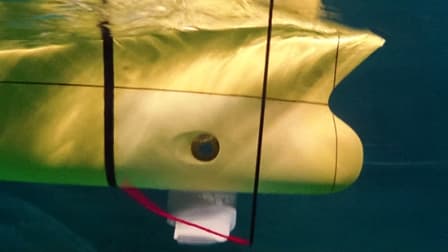NTNU Researchers Take Inspiration From Whale Tail To Reduce Drag In Ships
Like many people in the past, the researchers at the Norwegian University of Science and Technology (NTNU) have turned to nature to find ideas for improving machines. The team from NTNU working with Rolls-Royce and British companies Seaspeed and MOST under the leadership of Eirik Bøckmann has taken inspiration from whale’s tail to develop a hydrofoil like structure for ships that is able to reduce drag experienced by ships in rough seas. Even though they like to call their invention “whale tailâ€, the structure of the prototype looks more like two wings that are attached on the front of the ship, instead of the back.

So how do these hydrofoil wings help the ship go faster? In rough seas when the waves are strong they move the ship in an up-down motion. The two wave foils on either sides of the hull generate lift and drag by nature of the varying flow into them from orbital wave motion and vessel pitch, roll and/or heave motions. In simpler terms, their unique structure helps to generate lift that reduces the drag. The team is now testing these wave foils on a 1:16 scale model ship at the Department of Marine Technology at NTNU. As you can see from the video below, it takes the model ship a few seconds to cross the small 200m pool of simulated waves.
The team #-Link-Snipped-# that once these wave foils are scaled enough to be fitted on actual ships they might be able to reduce drag by 9 to 17 percent at wave heights of under three metres. The marine consulting company #-Link-Snipped-# is hopeful that the team will obtain the final results of the scale model tests by the end of this year.
Source: #-Link-Snipped-#

So how do these hydrofoil wings help the ship go faster? In rough seas when the waves are strong they move the ship in an up-down motion. The two wave foils on either sides of the hull generate lift and drag by nature of the varying flow into them from orbital wave motion and vessel pitch, roll and/or heave motions. In simpler terms, their unique structure helps to generate lift that reduces the drag. The team is now testing these wave foils on a 1:16 scale model ship at the Department of Marine Technology at NTNU. As you can see from the video below, it takes the model ship a few seconds to cross the small 200m pool of simulated waves.
The team #-Link-Snipped-# that once these wave foils are scaled enough to be fitted on actual ships they might be able to reduce drag by 9 to 17 percent at wave heights of under three metres. The marine consulting company #-Link-Snipped-# is hopeful that the team will obtain the final results of the scale model tests by the end of this year.
Source: #-Link-Snipped-#
0
